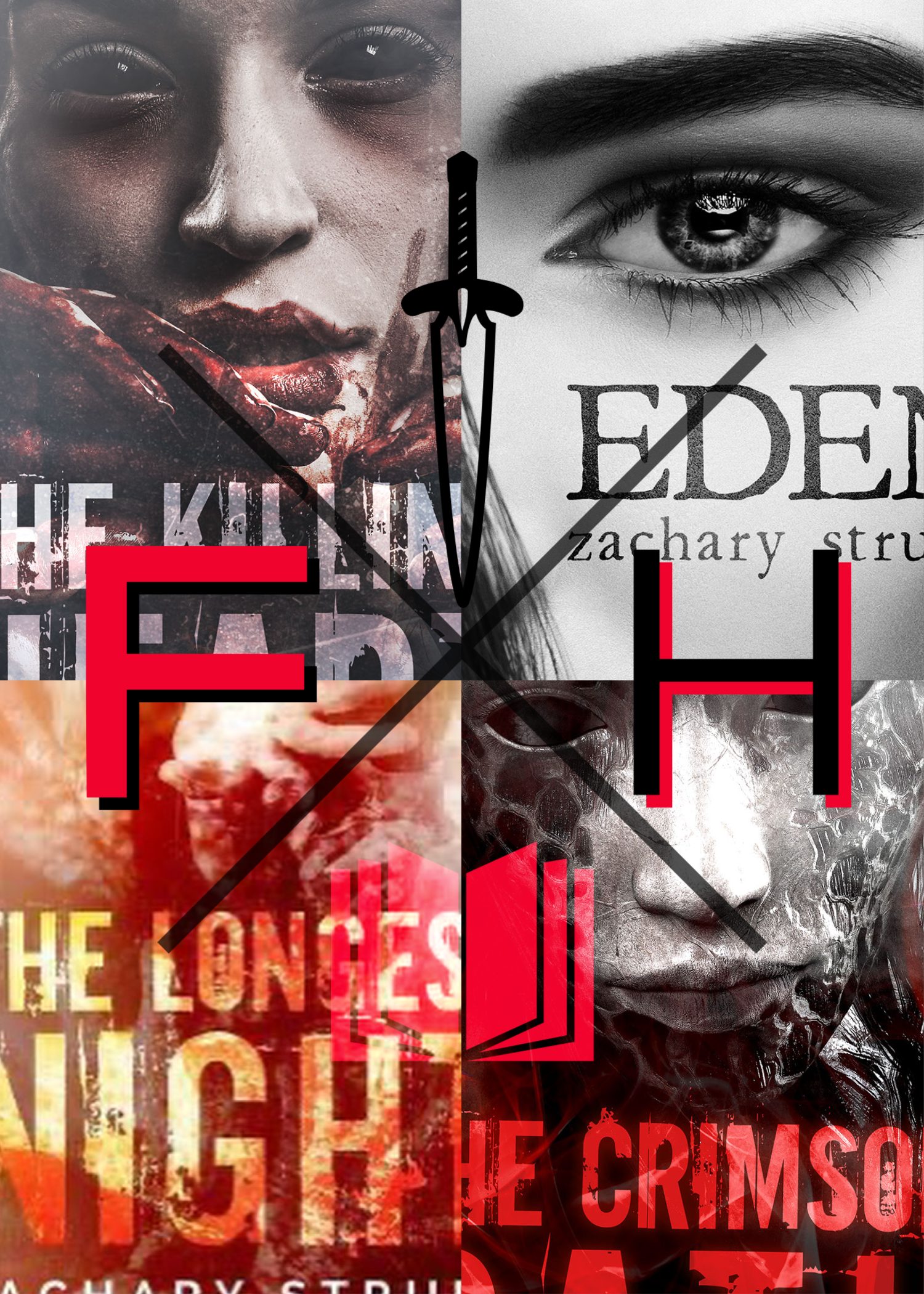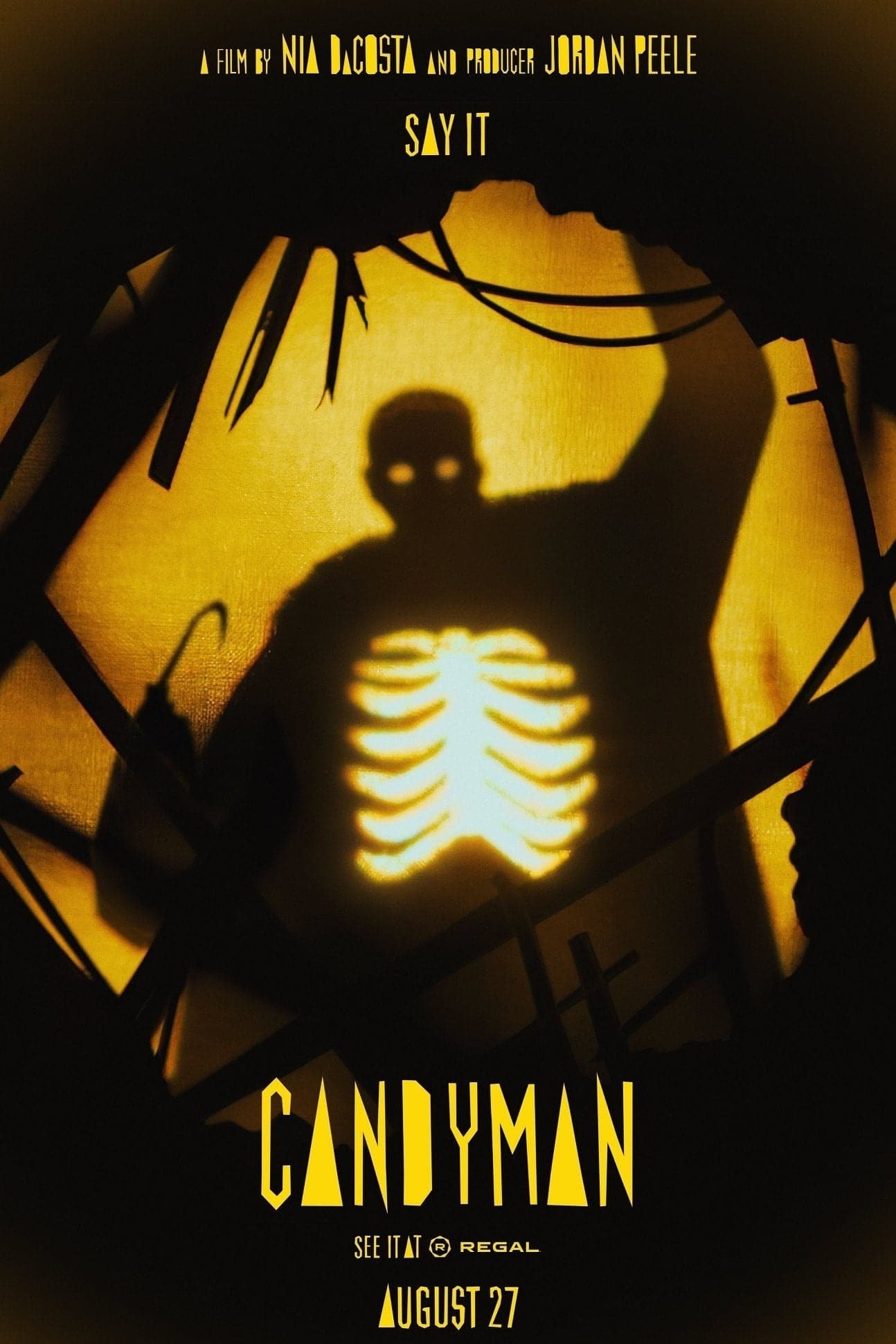Candyman (2021) - Movie Review
What do you get when you take a brilliant writer/director and team her with an equally brilliant writer/producer and then task this team with making a sequel to one of the most perfect films every entered into the pantheon of horror cinema?
One of the greatest sequels ever made, that’s what.
Let’s discuss.
Anyone who knows me,
Wait.
Anyone who has ever met me,
Wait.
Anyone who has ever had a passing conversation with me will know that I am a disciple of Clive Barker. His written works were the inspiration for my writing career. I’ve been chasing his literary example my entire life. He’s my artistic idol. Thus, anytime an adaptation of his work has been attempted in media, whether in film, television, or videogames, I do my best to consume it. Unfortunately, Clive’s written works are rarely translated with success. There are many more failures than successes, especially in the film category. For every Hellraiser and Nightbreed, there’s a Rawhead Rex or Books of Blood. This trend has gotten worse over time as almost every Barker project since Clive stopped directed has been a low-budget mess, but we still have the golden age, the 90’s.
In 1992, Bernard Rose adapted an obscure, extremely British story called The Forbidden from Barker’s incredible Books of Blood collection. Rose brilliantly crafted a screenplay transposing the story from the dreary slums of Liverpool to the projects of inner-city Chicago during the crack epidemic. Chicago was the murder capital of the United States. Gang violence was commonplace and condensed within the projects.
To those outside the United States, you probably have your own slang term for these places. You may call them slums, ghettos, or tenement housing. Theyre where our world’s civil planners try to sequester the “lesser peoples.” In cities like Chicago, this meant the African American community. Politicians pitched this “affordable housing” as the city’s way of providing for the less fortunate. In reality, It was a way to keep so-called undesirables contained. With the population condensed to cheaply built buildings with poor security and poorer occupants, it was a recipe for disaster. The good people had nowhere to run and those with evil in their hearts capitalized. Drugs, human trafficking, and brutal violence were a constant.
Rose’s screenplay gave us this grim vision with unblinking clarity and Nia Dacosta and Jordan Peele’s script expands on these themes with feigned modern wokeness.
I say feigned, not to mock them or their message, but because so many others have. This film has fairly awful viewer reviews from what I’ve scanned and most are from the Red Hat crowd.
Here’s the thing. This film speaks powerfully on the long-term effects of segregation on society. The projects were a trickledown effect from Jim Crow. It was another way to separate us all from each other. Multiple perspectives are given on what these horrible practices did and the scars they left. Police brutality, racial inequality, and the attempted cover-up of gentrification are all real issues. It isn’t wokeness to confront these issues.
MLK wasn’t woke, he was right.
Wokeness comes with a lack of context and overbearing revisionist history. The best example recently would be the recently cancelled Lovecraft Country. I desperately wanted to enjoy this show, but after the first two episode the show devolved into a caricature of a racial portrait where every single Hispanic or white character was a moustache twirling villain. I don’t need white people to be the heroes, but not every single lighter skinned person is a rapist or murderer.
This sequel to 1992’s Candyman isn’t woke in the least. Throughout the film the characters confront issues from the city’s past including the above-mentioned sins. Their confrontations are presented in fantastic dialogues that include various perspectives including upper-class whites, upper-class African Americans, and lower-class African Americans.
Whew.
Let me slide my soapbox back under the table.
2021’s Candyman focuses on a rising artist in the Chicago art scene Anthony Mccoy (played by Yahya Abdul-Mateen II) and his successful business woman Brianna (played by the incredible Teyonah Parris) as they navigate the cut-throat (pun intended) art scene of Chicago. Having just moved into a swanky penthouse in the recently gentrified neighborhood of Cabrini Green, they are at a crossroads. Anthony’s art career is floundering while Brianna is thriving. No one knows Anthony’s name and it bothers him, but Briana believes in him and tells him he’ll find his way. Which he does in an unlikely place. Brianna’s brother Troy (Nathan Stewart-Jarrett) brings his new boyfriend Grady (Kyle Kaminsky) to Briana and Troy’s new place for dinner and ends up telling them the story behind the neighborhood in which they live. He tells them the legend of Candyman, but with a few changes to what we, as the viewer know. Anthony is infected with the idea of Candyman and begins down a rabbit hole of horror and violence. As things spiral out of control and the blood on the ground pools thick, will Brianna be able to pull Anthony from the darkness, or will he fall victim to the hook? Find out in today’s episode: Candyman.
Just watch the movie. It’s great.
The animated flashback sequences done with paperart might be the greatest thing I’ve seen in recent cinema. It’s an old art style that felt incredibly fresh and ominous.
All of the actors are top notch, especially Teyonah Parris. The character of Brianna could have easily just been another unlikeable horror significant other, but with the life she brought to the role to go with solid writing, you empathize with her. More on this in the spoilers below.
I also have to shout out Nathan Stewart-Jarrett who plays one of the most sincere and organic gay characters in cinema. He’s equal parts flamboyant and heartfelt. Both he and Kaminsky work off each other perfectly giving us one of the most likeable couples in horror history. I was sincerely worried that they may not make it in the film. See below if I was right or wrong.
Then there’s the star, Yahya Abdul-Mateen II. He gives a solid if uneven performance. I don’t think it was his fault though as the third act was an absolute mess that almost ruined the entire film. Abdul-Mateen has an amazing voice and I think he was a fantastic choice, which I can’t explain because of….
(SPOILERS)
(SPOILERS)
(SPOILERS)
(SPOILERS)
(SPOILERS)
(SPOILERS)
I did not see the twist coming. How could I? I knew the gorgeous Vanessa Williams was reprising her role as Anne Marie from the original film, but I didn’t connect that she was actually Anthony’s mother. I didn’t predict that he was the child Helen saved from Candyman. It was a genius twist, as it finally provides an explanation for why Candyman kidnapped the child in the original film!
Brilliant!
Then they ruined it.
How?
By adding a human villain in the black community. The incredible Colman Domingo has a small role as the sage of Cabrini Green, William Burke. He is the one who provides the new expanded mythology of Candyman being a generational monster who absorbs new downtrodden souls into himself to stay relevant as time went forward. It’s a genius idea that allows for expansion of the mythos without retconning the original film. Daniel Robitaille is still canon. Tony Todd even gets a cameo, but unfortunately, they used terrible deaging CGI instead of having the man, the myth, the legend appear in the flesh. I really wish they’d used Todd’s voice throughout the film for Candyman. It would have covered a lot of ills.
The problem arises when instead of having Candyman be the villain and progress organically to possess Anthony, they have William Burke present himself as a kind of Prophet that has been engineering the entire thing on Candyman’s behalf to get justice for the black community.
It didn’t feel like it belonged in the same movie. The movie before that was subtle and nuanced and then it comes to a janky, rushed third act that feel stapled onto the film. It just doesn’t match up. It feels like another case of test audiences ruining a director’s vision.
It almost ruined the film.
Almost.
Until you realize that there’s two stories going on and you were fooled. Anthony’s story is actually a lie. He isn’t the downtrodden artist struggling against the oppressive white gallery culture. He just isn’t that good. His work is cliché, just as the art critic pointed out. We don’t realize we’ve been hoodwinked for the entire film until we find out that the only reason Anthony’s work gets shown at all is that Brianna is bank rolling it. She begging and pleading to get his work showcased. She’s sacrificed her career to help him succeed and all he’s done is complain and suck that charitable teet dry. Brianna is the protagonist. She’s the one we should have sided with from the get go. Her brother told us from the very beginning of the film that Anthony was a shit person who was dragging her down.
Incredible writing and incredible acting by Parris.
To my shock and happiness, Troy and Grady survive the film.
Is the film perfect like the original?
No.
Is it still one of the best horror sequels of all time?
Absolutely.
Fight me.
Candyman is streaming free on Prime Video currently.


